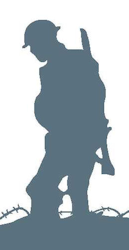Name
Ernest John Wood
Conflict
First World War
Date of Death / Age
05/08/1917
21
Rank, Service Number & Service Details
Lance Corporal
266434
Hertfordshire Regiment
1st Bn.
Awards: Service Medals/Honour Awards
Not Yet Researched
Cemetery/Memorial: Name/Reference/Country
DOZINGHEM MILITARY CEMETERY
III. A. 2.
Belgium
Headstone Inscription
Not Researched
UK & Other Memorials
Sawbridgeworth Town Memorial,
Great St Mary’s Church Memorial, Sawbridgeworth,
Hertfordshire Regimental Memorial, All Saints Church, Hertford
Pre War
Ernest was one of 9 children to John Wood and Jane Brace, born in April 1886 and was baptised at Sawbridgeworth in June that year.
He lived at Trims Green, High Wych and was an ‘Ordinary Agricultural Labourer’.
He was a resident of Sawbridgeworth when he enlisted in Hertford.
Wartime Service
Ernest served in both the Hertfordshire and Bedfordshire Regiments. Initially assigned to the 3/1st Battalion Bedfordshire Regiment with the service number 4606. Later, Ernest was transferred to the 1st Battalion Hertfordshire Regiment, and was in action with them on 31 July 1917, the first day of the Passchendaele offensive.
He was believed to have been wounded during the first day of the Battle of Passchendaele 31st July 1917. He survived the battle and was taken to the clearing station at Dozinghem, but died on the 5th August. There were two other clearing stations in the area called, called Bandaghem and Mendinghem. Together, to the soldiers they were known as (for) Dosing them, Bandaging them and Mending them.
The 1st Hertfordshire Battalion were in support of an attack on the Langemarck Line and a general bombardment of the German lines commenced at 3.45am on the 31st July and the planned assault began. It had three objectives to achieve known as Blue, Black & Green and units of the 116th Brigade easily captured the first two objectives, preparing the way for the forward companies of the Hertfordshire battalion, to take the third objective. At 05.00am the Hertfordshires left their assembly positions to attack their objective, which lay over the crest of a ridge.
As they made their way forward, they came under heavy fire from both German machine guns and snipers but after eliminating a German strongpoint moved up towards St. Juliaan, which was only lightly held. The battalion crossed the Steenbeek with some difficulty and two of its supporting Tanks became bogged down in the mud. Things then went from bad to worse. A pre-arranged artillery barrage never materialised due to the guns being unable to move forward over the muddy terrain and the German barbed wire defences, which were fifteen feet deep in some places, were found to still be intact. It was soon realised that ground could only be won by section " rushes" supported by the unit’s own fire.
The Cheshire Regiment were on the right of the battalion but the Black Watch, who were due to cover the left flank, had been seriously delayed. This left the Hertfordshire Regiment seriously exposed and the Germans exploited this by bringing a hurricane of fire down upon the stricken troops. This was followed by a German counterattack and by 10.30am it was clear that the objective could not be achieved. Casualties were very heavy with 459 men being killed, missing or wounded.
There is now a memorial to the Hertfordshire Regiment at St. Julien erected by the Herts at War Project.
Additional Information
His headstone does not appear to have an inscription, but the CWGC records note Mr J Wood, Trimmers Green, Sawbridgeworth as a contact.
Acknowledgments
Jonty Wild, Douglas Coe



